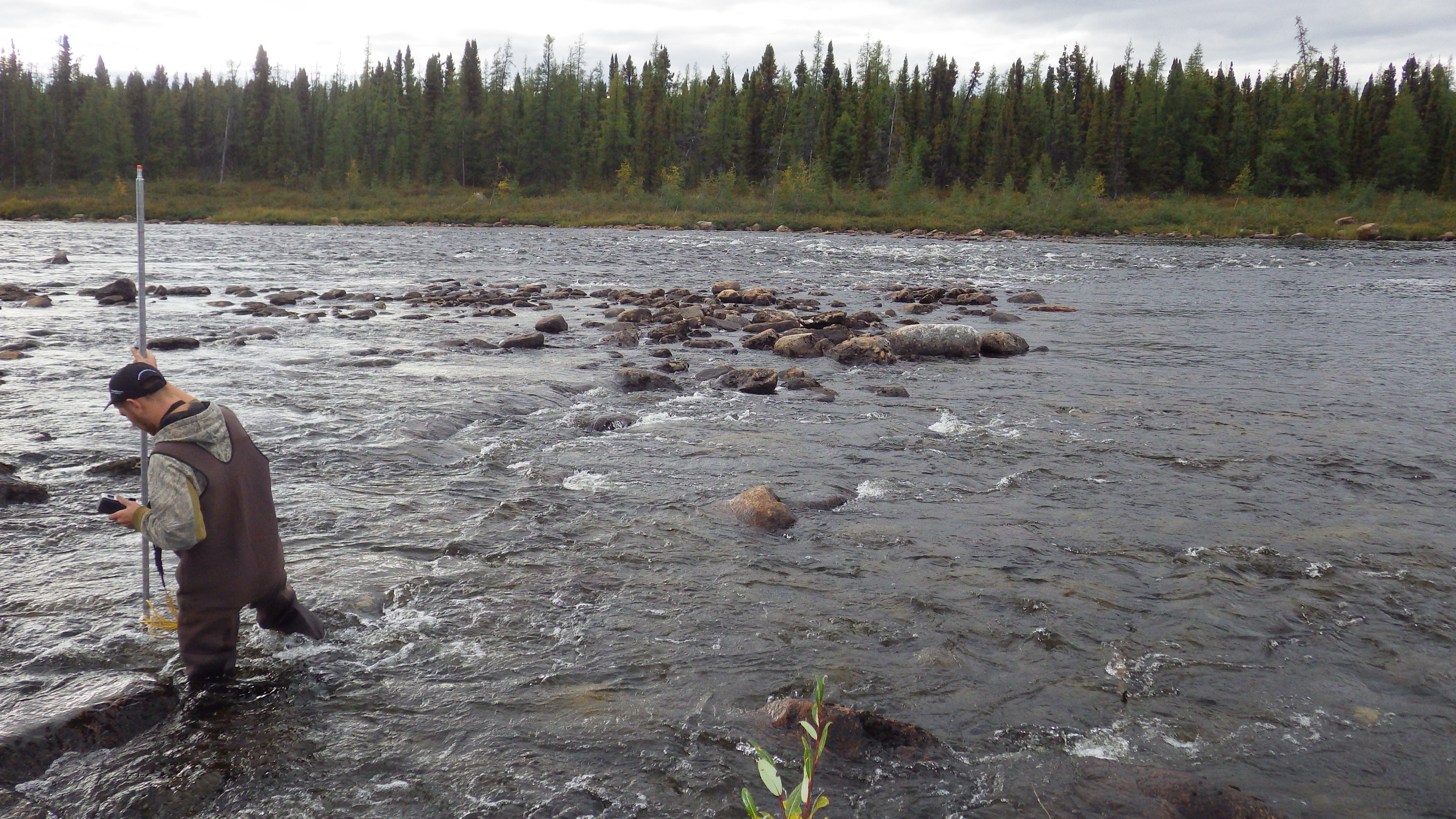Presence of Atlantic salmon in Ungava Bay, Nunavik, in the Koksoak System by FaunENord
December 1, 2016

There’s a saying that if you don’t ask the question, you’ll never know the answer.
Well, FaunENord decided to ask some questions to learn more about the Atlantic salmon in the Ungava Bay area of Nunavik in Quebec’s far north.
The project is in its second year, and is being funded by a grant totalling $50,000 awarded by the Atlantic Salmon Conservation Foundation. It is a collaborative effort with contributions from Quebec’s Ministry of Forests, Wildlife and Parks, and the Makivik Corporation.
Alexandre Anctil, project manager, said in the beginning the project was launched for one simple reason.
“We know very little about the Atlantic salmon in the Ungava area which makes its management and conservation complicated,” he said. “Actually, the Atlantic salmon population of Nunavik is the only one that was evaluated as data deficient by the Committee on the Status of Endangered Wildlife in Canada (COSEWIC). On top of its ecological and economical importance, the Atlantic salmon of the Ungava area also has a very important traditional value for the Inuit.”
“In order to adequately manage and protect this important resource, we felt that it was necessary to increase our knowledge on this population. We believed that one of the first steps to achieve that was to know which rivers are being used by the salmon. This can sound strange as salmon rivers are quite well known in southern Québec, or in the Maritime provinces, but in Nunavik the regulatory delineation of the legally recognized ‘salmon rivers’ was defined many years ago using the available knowledge and tools and therefore, many limits have been set arbitrarily.”
“Furthermore, it seems as if only the main rivers were considered to obtain the legal salmon river status and very few tributaries where the salmon could actually spawn have received a status. This is mostly because we don’t really know if the salmon use these small tributaries to spawn and if so, which ones.”
Anctil said based on this, they wanted to determine if other rivers or tributaries should be considered to receive the salmon river legal status and benefit from the protection associated with the status.
“In order to do so, the project was divided into two phases. First, we used theoretical data – like satellite imagery analysis provided by a team from the INRS – and data from interviews with outfitters, old scientific reports and sport fishing to target rivers and tributaries that have a good theoretical potential for the Atlantic salmon. As the Ungava region is very vast, our work was restricted to the Koksoak River watershed.”
“We selected the Koksoak system because it has a high potential for salmon habitat and the Koksoak salmon population is the most prized by local communities and sport fishers. Conservation in this sector is therefore a priority for the province’s Wildlife Management Branch.”
The rivers and tributaries with potential for the Atlantic salmon were identified in phase one. That meant phase two would involve going to Nunavik and actually going into the field to confirm the theoretical data.
“Again, the Koksoak system covers an area that is extremely vast so the Delay River area, a part of the Koksoak system, was selected for the field inventory. This area was selected for various reasons, but most importantly because it allowed us to cover many different tributaries with potential for the Atlantic salmon. So, in late August/early September 2016, we went in the Delay River area and sampled nine rivers or tributaries to detect the presence of salmon.”
Anctil said they have found young salmon in seven of the nine sampled sectors. They are now waiting for a specialized lab to conduct analysis on the specimens to determine if the young fish they caught are anadromous salmon or if they are landlocked salmon. He notes these results will be important since landlocked salmon do not benefit from the same protection as anadromous salmon.
“In the short term, we wanted to identify priority areas where efforts should be made to learn more about the Atlantic salmon within the Koksoak system, verify – if we can – salmon rivers based on theoretical data and once the results from the lab will be in, we want the tributaries in which we have found young salmon be recognized legally as salmon rivers.”
“In the long term, we hope that the data we have gathered, including the habitat characterization, will help validate and refine the theoretical models used to target rivers and tributaries with high potential for the Atlantic salmon in the Ungava region and thus provide an important new tool for Atlantic salmon management in the region. Obviously, the ultimate goal of the project is to actively contribute to the Atlantic salmon conservation in the region where our organizations operate.”
